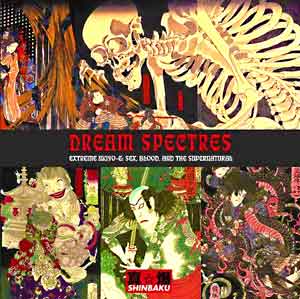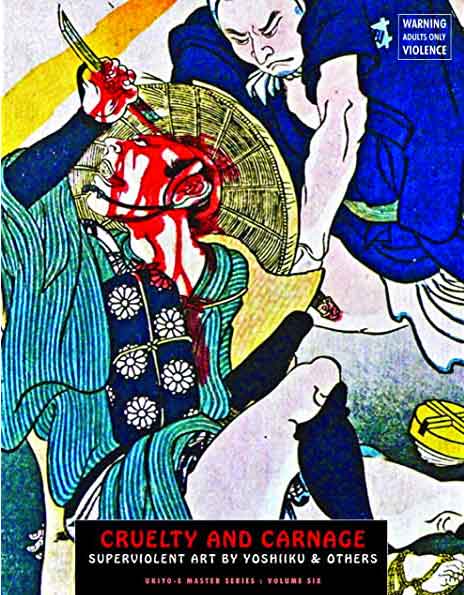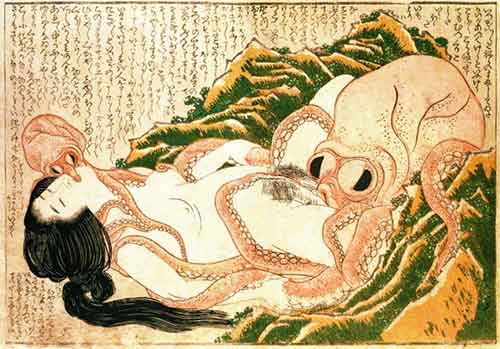 By JACK HUNTER (Shinbaku; 2010)
By JACK HUNTER (Shinbaku; 2010)
This mind-roasting volume is without question one of the standout books of 2010. It’s a lively, user-friendly study of ukiyo-e (“images from the floating world”) woodblock printed art from 18th and 19th Century Japan. Ukiyo-e was an evident forerunner of today’s manga as well as quite a few popular J-Horror motifs, notably the pasty woman with black hair of RINGU and THE GRUDGE, which apparently had its inception in a 1750 ukiyo-e painting by Maruyama Okyo.
Author Jack Hunter (a pseudonym for Creation Books founder James Williamson) provides a succinct history of ukiyo-e, which began as book illustrations and came to encompass kabuki theater posters and scandal sheets before dying out in the late 19th Century. Yet the eye-popping, quintessentially Japanese artwork that came out of the movement is nothing short of extraordinary.
This book, as its subtitle makes clear, deals with the darker regions of the ukiyo-e movement, specifically the gory, perverse and horrific aspects. Graphic depictions of rape, bondage, torture and dismemberment were all common elements of this mass produced art form, which was viewed by Japanese citizens of every social strata.
DREAM SPECTRES’ true selling points are of course the hundreds of full color reproductions of ukiyo-e paintings, making this a must-own volume even for those with no interest in Japanese history. Extreme this art is, even by today’s standards (Western standards, that is!), but the pictures have a distinctness and creative exuberance that cannot be denied or ignored.
The grossness and outrage of the pornographic illustrations on display here, nearly all featuring absurdly oversized genital organs, are undeniably striking (to say the least!). So too the spirited bloodletting of Yoshitoshi Tsukioka, who specialized in insanely gory scenes of reality-based carnage (including a man ripping another’s face from his skull), and the near-psychedelic palettes of Kuniteru Utagawa and Shuntei Katsukawa, who pictured brave warriors battling dragons and giant sea turtles.
Of a similar hue are the nishiki-e illustrated broadsheets of the period, essentially an early incarnation of tabloid journalism with typically lurid yet artful depictions of actual crimes surrounded by text outlining the particulars of the case. Stand-out nishiki-e images include two women tied to a tree with their lower halves devoured by wolves and a sword driven down an adulterous wife’s throat by her jealous husband.
At the other end of the spectrum are poetic depictions of supernatural calamity by the likes of Kyosai Kawanabe, whose rendering of a madman dancing on a giant skull is a most novel sight, and Kuniyoshi Utagawa, who gives us a profoundly haunting image of a ship besieged by dimly-glimpsed ghosts. Hiroshige Ando’s “Snow Ghosts” is downright surreal, depicting a general viewing a snowy landscape packed with the skulls of his victims. Finally there are the haunting and ethereal paintings of the abovementioned Maruyama Okyo, who was apparently inspired to create his famous portrait of a ghostly woman after encountering the spirit of his deceased mistress in a dream.
There’s far more to this book, of course, which can only be classified as a crowning achievement. DREAM SPECTRES is the first-ever English language book on ukiyo-e, and may well end up the definitive one.


